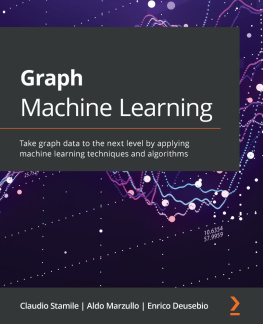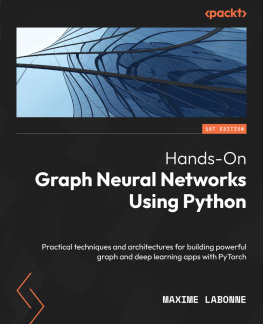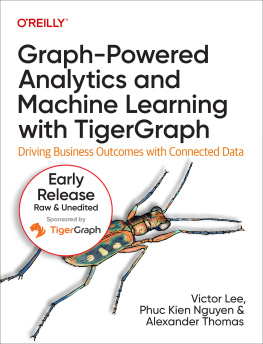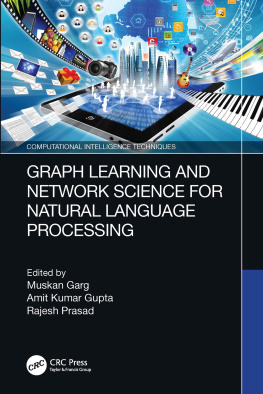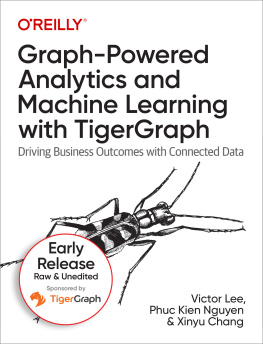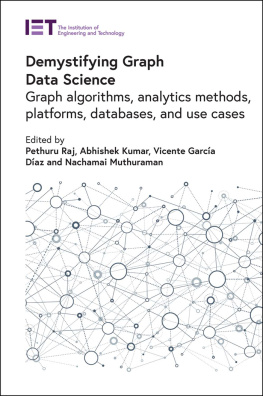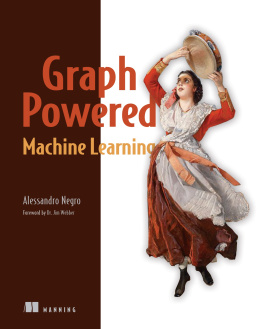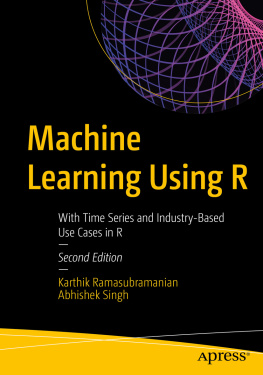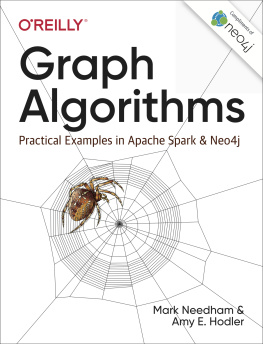Claudio Stamile - Graph Machine Learning: Take graph data to the next level by applying machine learning techniques and algorithms
Here you can read online Claudio Stamile - Graph Machine Learning: Take graph data to the next level by applying machine learning techniques and algorithms full text of the book (entire story) in english for free. Download pdf and epub, get meaning, cover and reviews about this ebook. year: 2021, publisher: Packt Publishing, genre: Home and family. Description of the work, (preface) as well as reviews are available. Best literature library LitArk.com created for fans of good reading and offers a wide selection of genres:
Romance novel
Science fiction
Adventure
Detective
Science
History
Home and family
Prose
Art
Politics
Computer
Non-fiction
Religion
Business
Children
Humor
Choose a favorite category and find really read worthwhile books. Enjoy immersion in the world of imagination, feel the emotions of the characters or learn something new for yourself, make an fascinating discovery.
- Book:Graph Machine Learning: Take graph data to the next level by applying machine learning techniques and algorithms
- Author:
- Publisher:Packt Publishing
- Genre:
- Year:2021
- Rating:3 / 5
- Favourites:Add to favourites
- Your mark:
Graph Machine Learning: Take graph data to the next level by applying machine learning techniques and algorithms: summary, description and annotation
We offer to read an annotation, description, summary or preface (depends on what the author of the book "Graph Machine Learning: Take graph data to the next level by applying machine learning techniques and algorithms" wrote himself). If you haven't found the necessary information about the book — write in the comments, we will try to find it.
Build machine learning algorithms using graph data and efficiently exploit topological information within your models
Key Features- Implement machine learning techniques and algorithms in graph data
- Identify the relationship between nodes in order to make better business decisions
- Apply graph-based machine learning methods to solve real-life problems
Graph Machine Learning provides a new set of tools for processing network data and leveraging the power of the relation between entities that can be used for predictive, modeling, and analytics tasks.
You will start with a brief introduction to graph theory and graph machine learning, understanding their potential. As you proceed, you will become well versed with the main machine learning models for graph representation learning: their purpose, how they work, and how they can be implemented in a wide range of supervised and unsupervised learning applications. Youll then build a complete machine learning pipeline, including data processing, model training, and prediction in order to exploit the full potential of graph data. Moving ahead, you will cover real-world scenarios such as extracting data from social networks, text analytics, and natural language processing (NLP) using graphs and financial transaction systems on graphs. Finally, you will learn how to build and scale out data-driven applications for graph analytics to store, query, and process network information, before progressing to explore the latest trends on graphs.
By the end of this machine learning book, you will have learned essential concepts of graph theory and all the algorithms and techniques used to build successful machine learning applications.
What you will learn- Write Python scripts to extract features from graphs
- Distinguish between the main graph representation learning techniques
- Become well-versed with extracting data from social networks, financial transaction systems, and more
- Implement the main unsupervised and supervised graph embedding techniques
- Get to grips with shallow embedding methods, graph neural networks, graph regularization methods, and more
- Deploy and scale out your application seamlessly
This book is for data scientists, data analysts, graph analysts, and graph professionals who want to leverage the information embedded in the connections and relations between data points to boost their analysis and model performance using machine learning. The book will also be useful for machine learning developers or anyone who want to build ML-driven graph databases. A beginner-level understanding of graph databases and graph data is required. Intermediate-level working knowledge of Python programming and machine learning is also expected to make the most out of this book.
Table of Contents- Getting Started with Graphs
- Graph Machine Learning
- Unsupervised Graph Learning
- Supervised Graph Learning
- Problems with Machine Learning on Graphs
- Social Network Graphs
- Text Analytics and Natural Language Processing Using Graphs
- Graph Analysis for Credit Card Transactions
- Building a Data-Driven Graph-Powered Application
- Novel Trends on Graphs
Claudio Stamile: author's other books
Who wrote Graph Machine Learning: Take graph data to the next level by applying machine learning techniques and algorithms? Find out the surname, the name of the author of the book and a list of all author's works by series.

